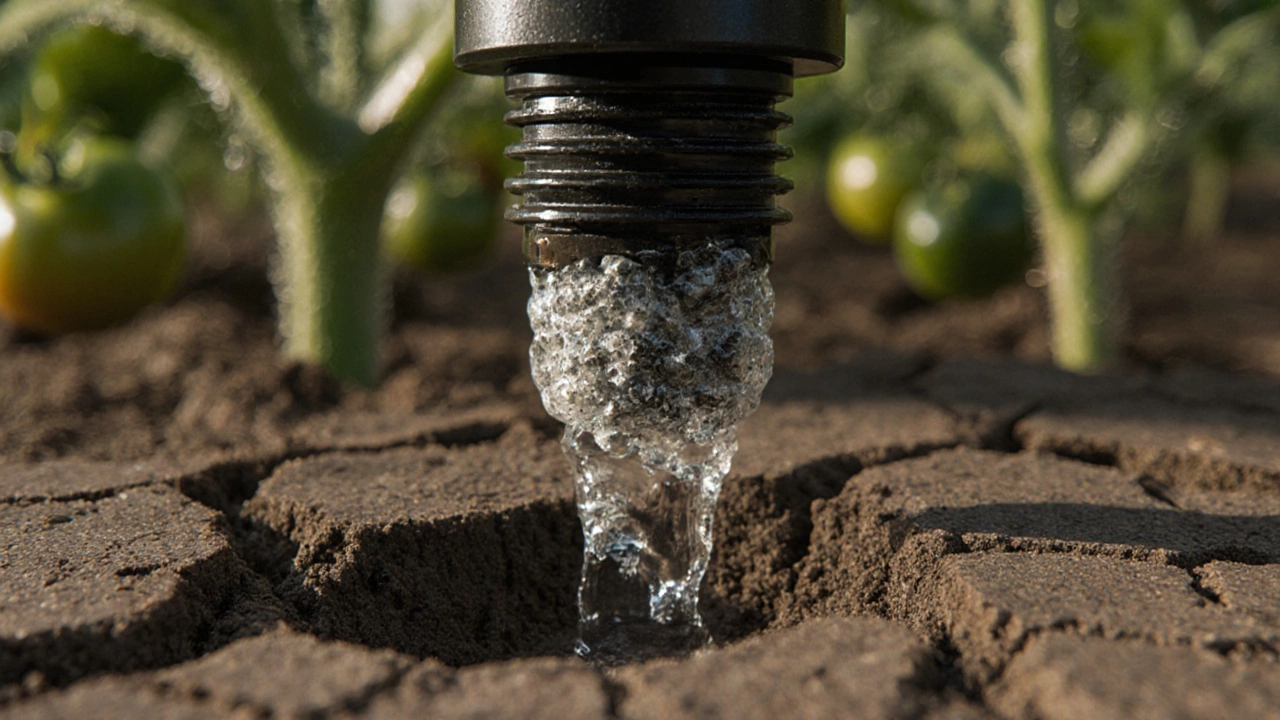Drip emitters are efficient but prone to clogging, uneven flow, and damage. Learn the common problems and how to fix or prevent them to keep your garden healthy and water-efficient.
Clogged Drip Lines: Fix, Prevent, and Keep Your Irrigation Running Smoothly
When your clogged drip lines, narrow tubes that deliver water directly to plant roots in drip irrigation systems. Also known as emitter lines, they’re meant to save water and time—but when they block up, they waste both. If you’ve ever watched water pooling at the start of your line while your plants stay dry, you know how frustrating this is. It’s not just a nuisance—it’s a threat to your crop health, especially in India’s hot, dry spells where every drop counts.
What causes these blockages? It’s rarely one thing. Dust from dry winds, mineral buildup from hard water, algae growing in sun-exposed tubing, or even tiny roots sneaking in—all of these can choke your system. Farmers in Punjab and gardeners in Bangalore face the same issue, just with different triggers. Hard water in Rajasthan leaves white crust inside lines. In Kerala’s humid climate, algae blooms faster. And if you skip flushing your system after planting season, debris piles up like a clogged sink.
You don’t need fancy tools to fix this. A simple vinegar flush works wonders for mineral deposits. For organic gunk, a weak bleach solution does the trick. But the real win? Prevention. Install a basic filter at your water source—something as simple as a 150-mesh screen. Flush your lines monthly, even when things seem fine. And never leave water sitting in the tubes during long breaks. These aren’t pro tricks—they’re basics that save hours, water, and money over time.
Related to this are the drip irrigation, a water-efficient system using tubes and emitters to deliver slow, targeted moisture to plants setups themselves. Not all are built the same. Cheap systems crack in the sun. Low-pressure lines don’t self-clean. And if you’re using recycled pipes or mismatched parts, you’re asking for trouble. Stick to UV-resistant polyethylene tubing, especially in India’s harsh climate. Brands like Netafim or local Indian manufacturers like Jain Irrigation offer reliable options that last.
And then there’s the irrigation maintenance, the regular cleaning, inspection, and adjustment of watering systems to ensure consistent performance habit. It’s not glamorous. But think of it like changing your car’s oil. Skip it once, and you’re fine. Skip it for six months? You’re stranded. A quick 10-minute check every few weeks keeps your system humming. Look for drips that have stopped. Check pressure at the start. Smell for mildew. These are the signs that tell you before the whole line fails.
What you’ll find in the posts below aren’t theory pages or marketing fluff. These are real fixes from farmers and home gardeners who’ve been there. You’ll see how someone in Maharashtra cleared a year’s buildup with baking soda and a syringe. How a balcony gardener in Chennai prevented algae by shading her lines with bamboo. How a small-scale tomato grower in Andhra saved 40% on water just by cleaning his drip lines every 15 days. No jargon. No overcomplicated gadgets. Just what works, in Indian conditions, with everyday tools.
